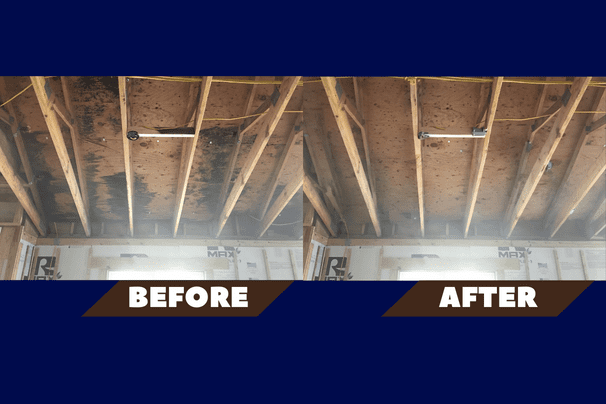A leaking roof is more than just an inconvenience; it can be a gateway to serious issues like mold from roof leaks. While fixing the roof leak is a crucial first step, many homeowners fail to realize that mold from roof leaks can persist long after the immediate problem is resolved. Understanding how roof leaks contribute to mold issues can help homeowners take proactive steps to protect their homes and health.
How Roof Leaks Contribute to Mold Growth
When water enters a home through a damaged roof, it often seeps into insulation, drywall, and other porous materials. These damp areas provide an ideal breeding ground for mold, which thrives in moist, dark environments. The longer the water remains undetected, the greater the likelihood of extensive mold growth.
Mold spores are naturally present in the air, but they require moisture to colonize and spread. A persistent roof leak can create the perfect conditions for mold to develop, often in hidden places like attics, behind walls, and in ceiling cavities. By the time visible signs appear, the mold may have already caused significant damage.
Why Mold From Roof Leaks Persists Even After Repairs
Many homeowners assume that once the roof leak is repaired, the problem is solved. However, moisture trapped in building materials can take weeks or even months to fully dry out. During this time, mold from roof leaks continues to thrive and spread, often undetected. Additionally, if affected areas are not properly treated, mold spores can remain dormant and reactivate when moisture levels rise again.
Common Signs of Mold From Roof Leaks
Even after addressing a roof leak, homeowners should stay vigilant for signs of lingering mold problems, including:
- Musty odors in certain areas of the home
- Dark spots or discoloration on ceilings and walls
- Increased allergy symptoms or respiratory issues
- Peeling paint or warped drywall
Preventing and Addressing Mold
To fully handle mold problems caused by roof leaks, follow these essential steps:
- Identify the Problem: Look for visible mold growth, musty odors, or signs of water damage in affected areas.
- Schedule an Inspection: Contact a professional mold remediation service for a comprehensive assessment.
- Choose a Safe Remediation Method: Opt for non-invasive treatment options like the Smart Nano Purification Process, which effectively neutralizes mold at a molecular level without requiring demolition.
- Comprehensive Moisture Removal: Ensure all affected areas are completely dried using professional-grade dehumidifiers and ventilation systems to eliminate any remaining moisture.
- Prevent Future Growth: Address underlying moisture issues by improving ventilation, fixing leaks, and monitoring humidity levels to keep mold from returning.
Conclusion
Mold should never be taken lightly, as it can lead to long-term problems that jeopardize both your home’s structural integrity and your health. Even after fixing a leak, homeowners must remain proactive in ensuring all moisture is removed and mold is properly addressed. By following these steps and utilizing the Smart Nano Purification Process, you can safeguard your home from the hidden dangers of mold from roof leaks. This efficient, non-invasive method ensures a healthier, mold-free living environment without the need for extensive demolition and material replacement. Call Mold Experts today to find out how to easily rid your home of any and all mold!
Links:


